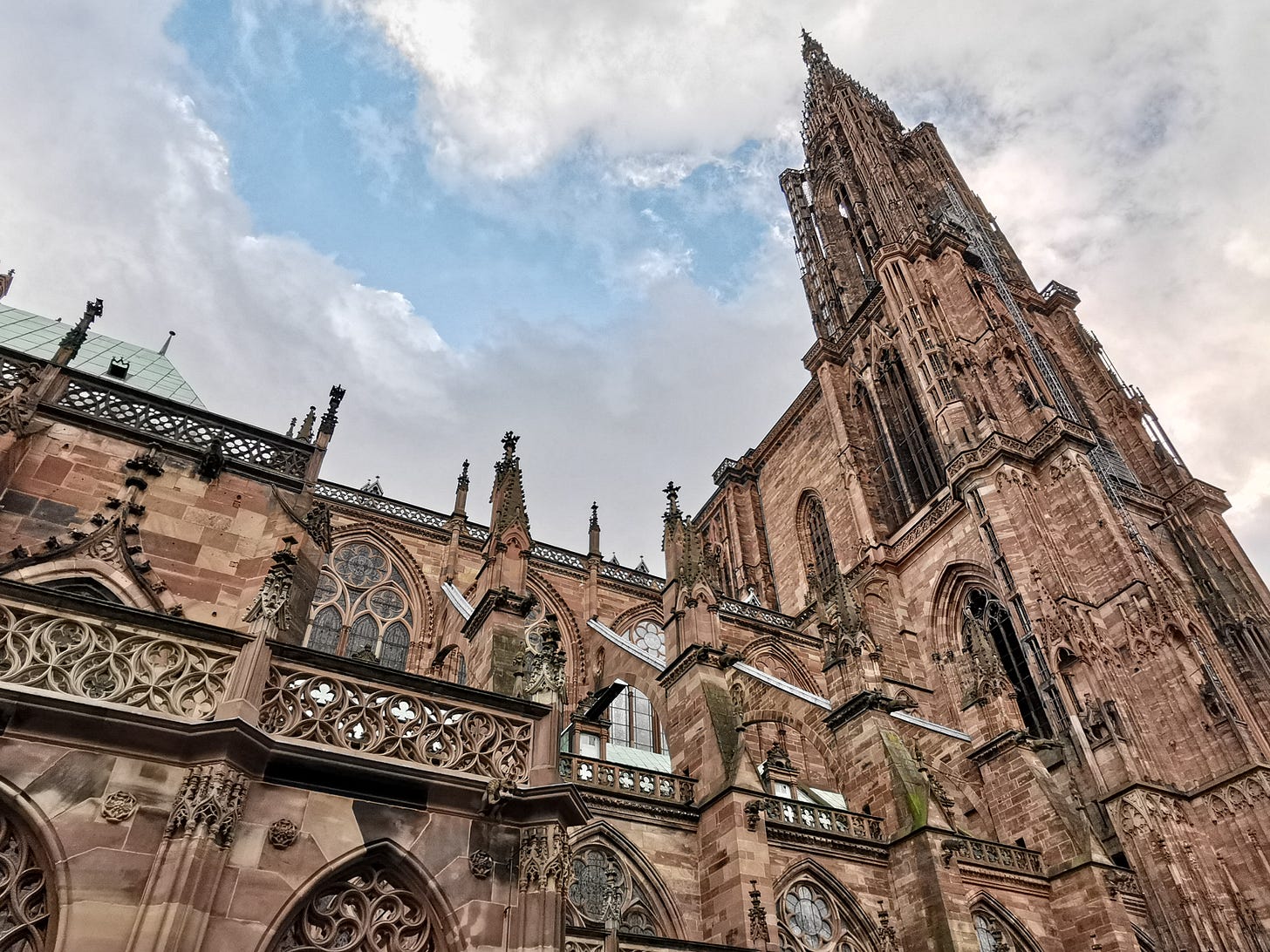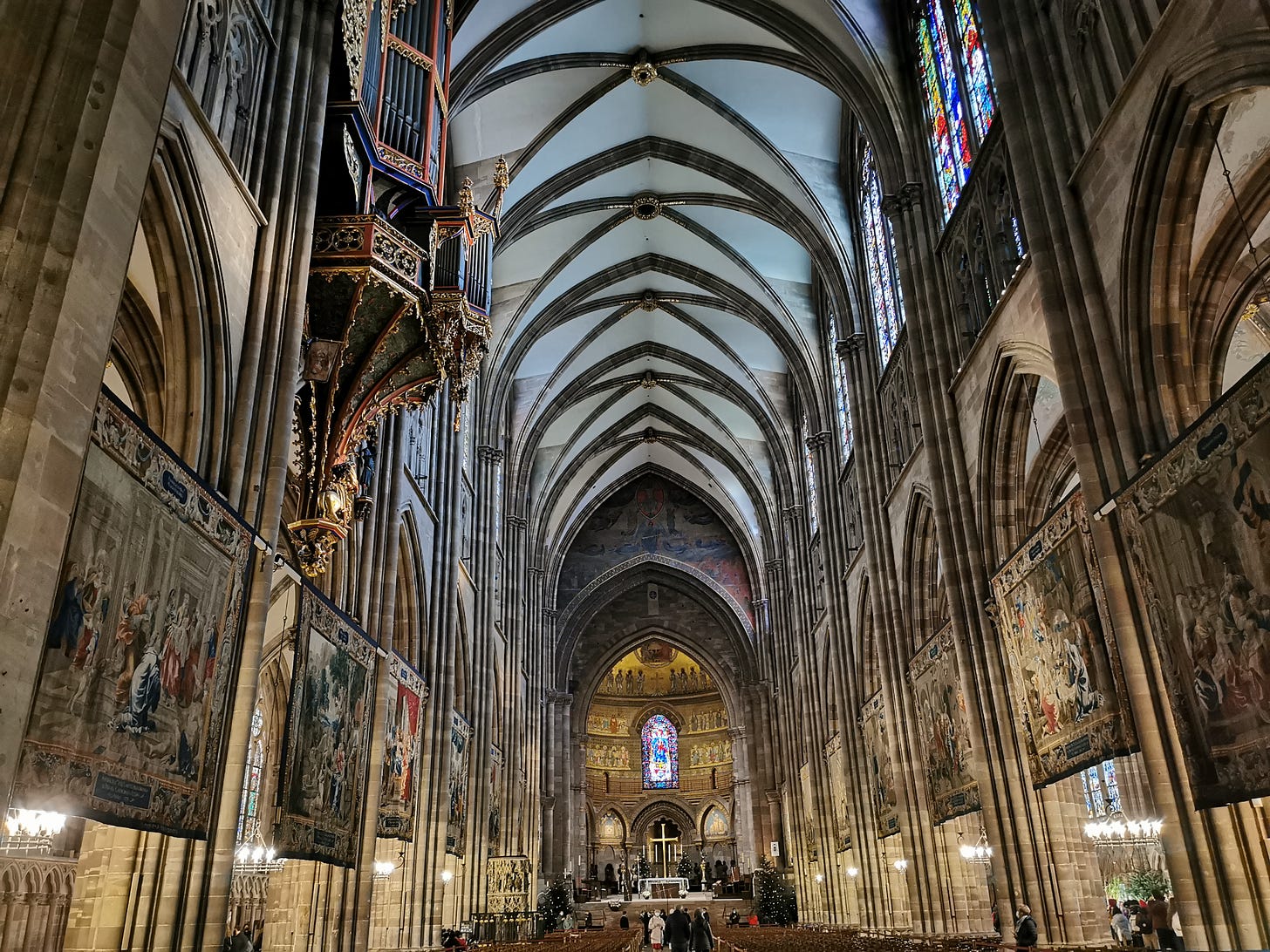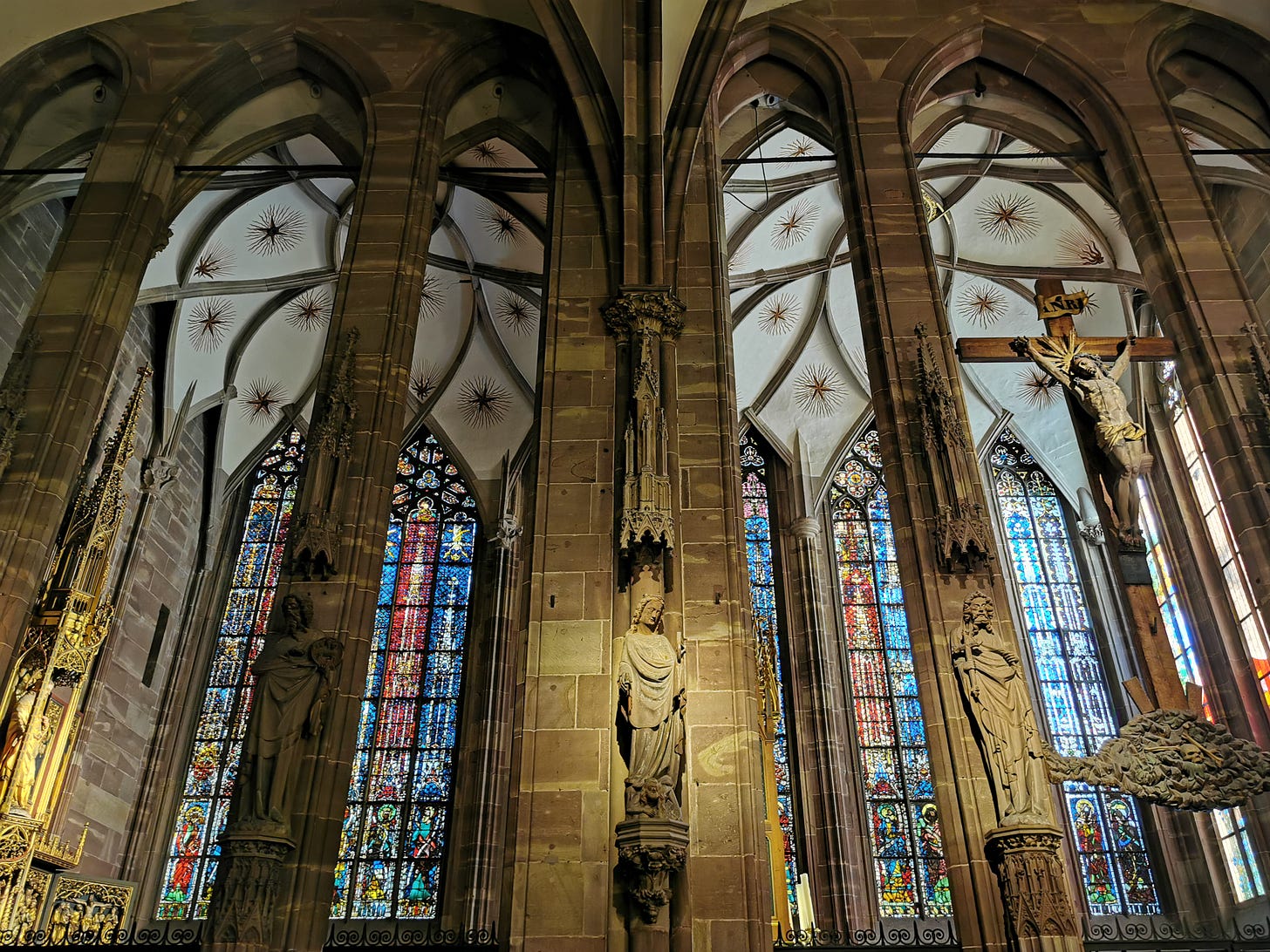Dreaming Of France: Strasbourg's Notre Dame Cathedral
A Gothic Masterpiece of Art and Science.
Rising majestically above the medieval streets of Strasbourg, the Cathedral of Notre Dame stands as one of Europe's finest examples of Gothic architecture and a testament to human ingenuity.
For over 800 years, its distinctive pink sandstone facade and singular spire have dominated the city's skyline, earning it the admiration of visitors such as Victor Hugo, who described it as a "gigantic and delicate marvel."
Construction of the cathedral began in 1015 with a Romanesque church. However, today's structure primarily dates from the 13th to 15th centuries. The transition to the Gothic style started in 1176 under the direction of Master Builder Erwin von Steinbach, whose architectural genius would set the foundation for generations of craftsmen to follow. The cathedral's construction spanned multiple centuries, allowing it to showcase the evolution of Gothic architecture from its early phases to its flamboyant period.
The cathedral's west facade is particularly noteworthy for its harmonious blend of architectural elements. Standing 142 meters high, the north tower and its spectacular spire were completed in 1439 by Johannes Hültz. From 1647 to 1874, it was the world’s tallest building.
The planned south tower was never built, creating an asymmetrical appearance that has become one of the cathedral's most distinctive features.
The building's exterior is adorned with thousands of sculptures, ranging from biblical figures to whimsical grotesques. The carved details showcase medieval craftsmanship at its finest, with each figure telling its own story within the greater narrative of Christian salvation. The pink Vosges sandstone used in construction gives the cathedral its characteristic warm hue, which seems to change color throughout the day as the light shifts.
The facade features three richly decorated portals, with the central portal dedicated to Christ's passion and resurrection. Above these, a magnificent rose window spans 13.6 meters in diameter, flooding the interior with kaleidoscopic light through its intricate tracery.
Interior
Inside, the cathedral reveals itself as a masterpiece of medieval engineering and sacred architecture. The nave rises to a height of 32 meters, supported by massive pillars and flying buttresses that allow for vast expanses of stained glass windows. The geometric precision of the vaulted ceiling demonstrates the medieval builders' advanced understanding of mathematics and structural engineering.
Other notable interior elements include the pulpit, carved in 1485 by Hans Hammer, featuring intricate Gothic tracery and statuary.
The organ, housed in a case from 1385, remains one of Europe's oldest surviving organ cases. The cathedral also houses remarkable stained glass windows dating from the 12th to 14th centuries, including the famous Jesse Window, which depicts the genealogy of Christ.
Astronomical Clock
Perhaps the cathedral's most famous interior feature is its astronomical clock, the third to occupy this space since 1354. The current clock, installed between 1838 and 1843, is a remarkable feat of mechanical engineering and astronomical calculation. Standing 18 meters tall, it combines artistry with scientific precision, tracking the movements of the sun, moon, and planets.
The clock features an automaton show when figures representing the apostles parade before Christ, while a rooster crows three times in remembrance of Peter's denial.
The clock's mechanisms include a perpetual calendar, an ecclesiastical computer that calculates the date of Easter, and various astronomical indicators. The clock face displays not only the time but also planetary positions, solar and lunar eclipses, and various celestial phenomena with remarkable accuracy. This combination of scientific precision and artistic beauty makes it one of the world's finest examples of Renaissance mechanical craftsmanship.
Visiting
The cathedral has weathered numerous historical challenges, including the Protestant Reformation, when it briefly served as a Protestant church, and the French Revolution, during which it suffered some damage but was largely protected by local citizens. During World War II, the stained glass windows were removed and stored safely, protecting them from bombing damage.
The Strasbourg Cathedral draws more than 2.5 million visitors each year, making it the most visited cathedral in France during the closing of its famous cousin in Paris. It was classified as a historic monument in 1862 and has been part of the UNESCO World Heritage site "Strasbourg, Grande-Île and Neustadt" since 1988.
The cathedral is free to visit, but check hours in advance because access is limited during masses. Lines to enter can be long to get through security. For more information, see the website.
Chris O’Brien
Paris, France




















The cathedral of Strasbourg is, to me, one of the most beautiful in France, especially the western façade with its intricate stonework. What a joy to see it again through your photos taken on-site!
A marvel even in a country full of cathedrals!